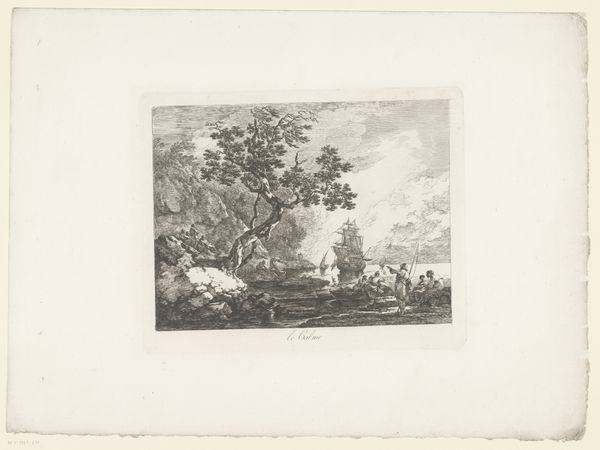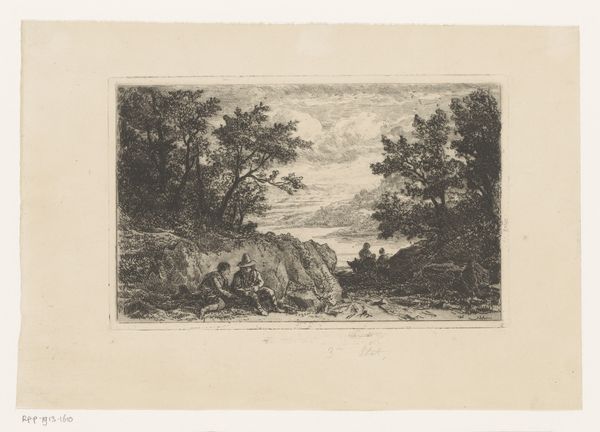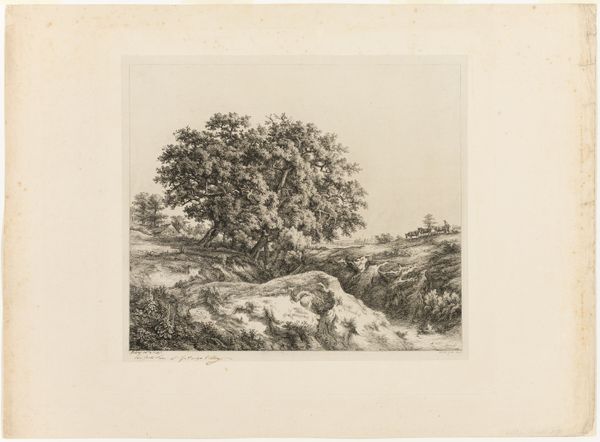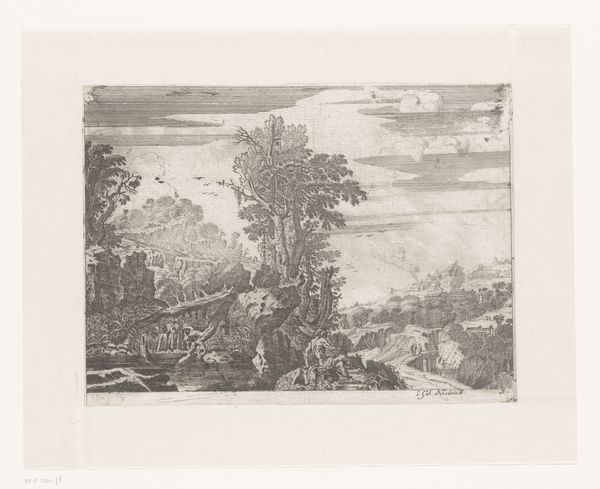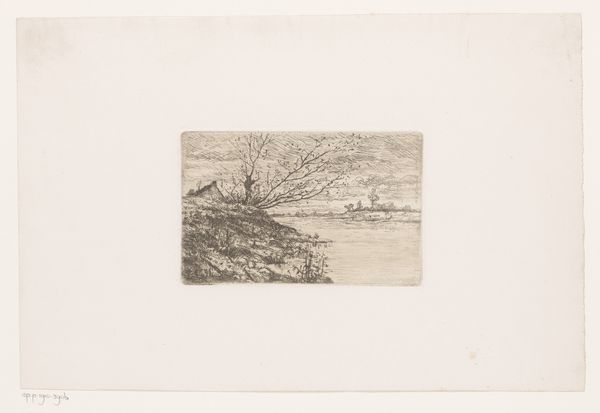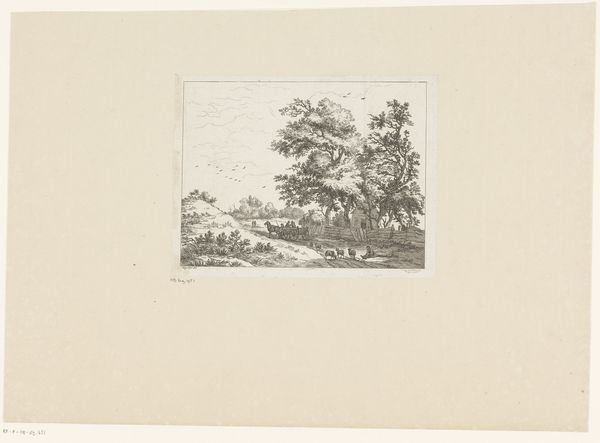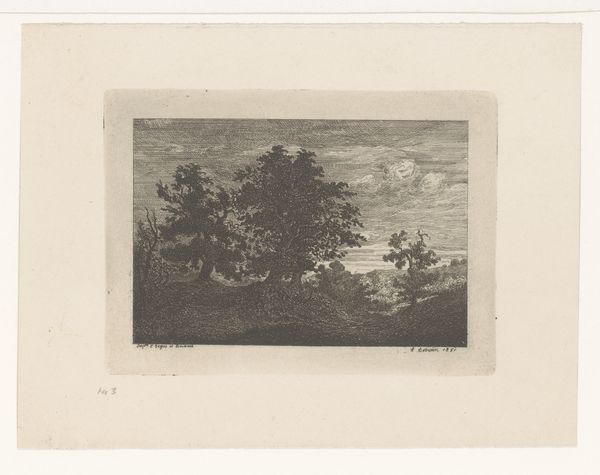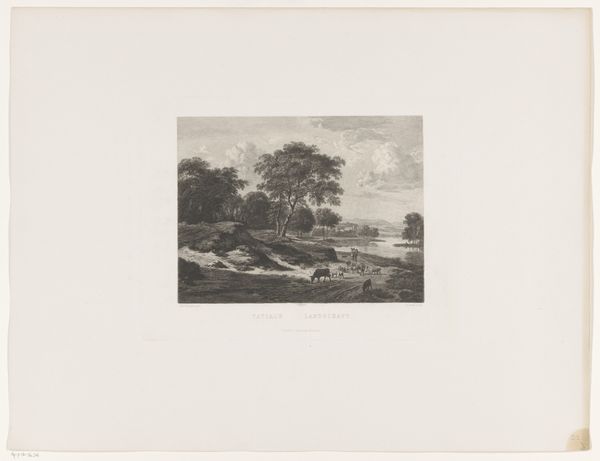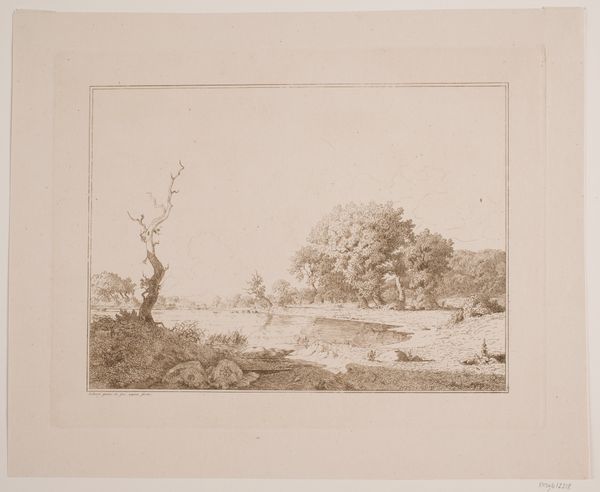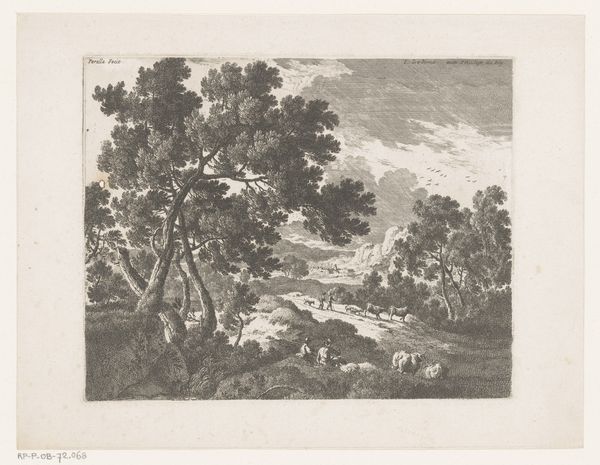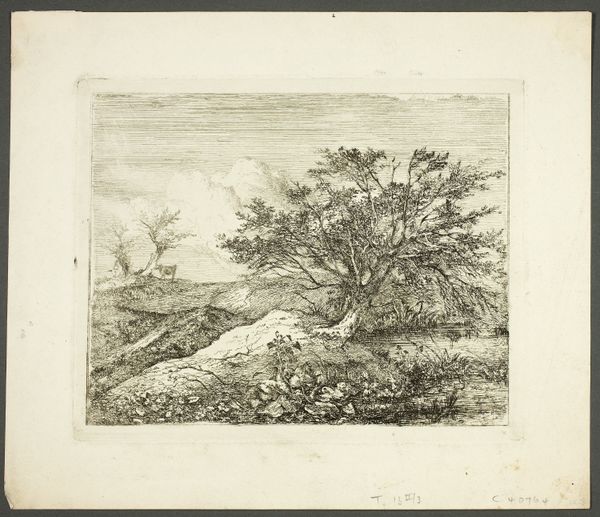
print, etching
# print
#
etching
#
landscape
#
realism
Dimensions: 128 mm (height) x 181 mm (width) (Plademål)
Curator: Look at this small but captivating piece. This is "Parti fra Østrøø," or "View from Østrøø," created in 1891 by Niels Skovgaard. It’s an etching, a type of printmaking. What are your initial thoughts? Editor: Striking! It has a remarkable tonal range despite the limited color, evoking a melancholic yet peaceful stillness. The composition, with its receding planes, creates an impressive sense of depth. Curator: Indeed, Skovgaard's technical skill is on full display here. Printmaking at the time involved collaborative workshops and divisions of labor. This piece reflects the growth of accessible image production catering to a wider public seeking affordable art for their homes. Consider how different this is from commissioned paintings for the wealthy. Editor: Certainly. But look at the artist's mastery of line and texture. The way he uses cross-hatching to model form is masterful, wouldn't you agree? Note especially how light dances through the trees, creating such subtle yet distinct forms with their unique foliage. The artistry is undeniable, regardless of its potential reproducibility. Curator: Well, the reproducibility contributes to its meaning. These weren't unique precious objects meant for elite consumption, but more about a democratizing trend. They depict familiar local landscapes, perhaps reflecting Skovgaard's interest in grounding national identity in connection with regional production. Editor: That’s fair; however, focusing solely on this risks overlooking the artist's intention. How else can we explain the formal emphasis on depth and light that speaks to this almost meditative feeling? Curator: I acknowledge the skillful rendering of light. But consider what’s *depicted*: the landscapes themselves contributed to the construction of a shared identity within the growing nationalist sentiment. Prints like this enabled broader access to such imagery. Editor: Perhaps it's both? The technique enables a broad dissemination of nationalist iconography, yes, but the artist has also used those processes to capture the tranquil light unique to this place in Østrøø. The artist elevated something accessible into art that’s truly beautiful. Curator: So, a convergence of commerce and aesthetic? Editor: Precisely. I see both technical craft and intention working beautifully here. Curator: Interesting point! Seeing it both in terms of access, materiality *and* technique. Editor: Agreed. A deeper understanding is possible by not prioritizing any single angle, such as the social context over aesthetic choices. It's both that make this such a worthwhile work.
Comments
No comments
Be the first to comment and join the conversation on the ultimate creative platform.
